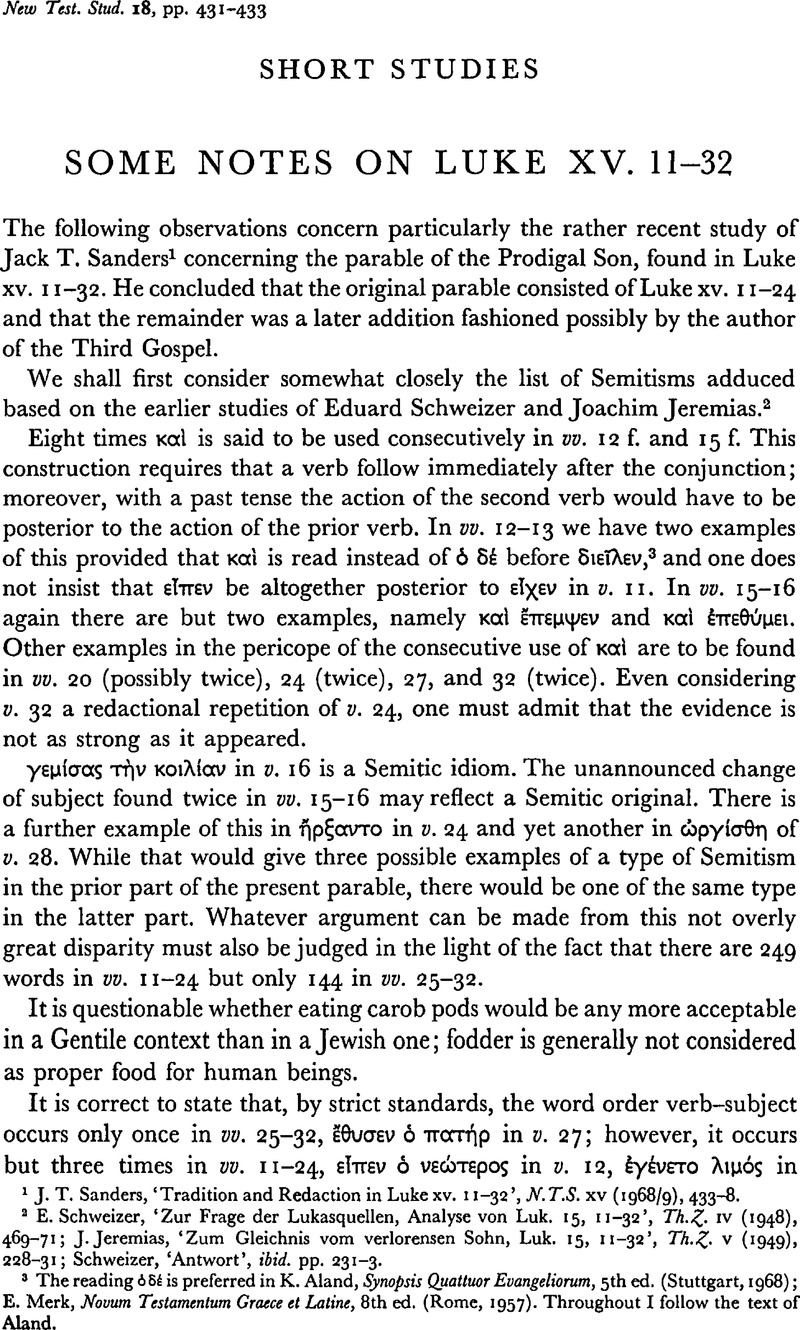No CrossRef data available.
Article contents
Some Notes on Luke XV. 11–32
Published online by Cambridge University Press: 05 February 2009
Abstract

- Type
- Short Studies
- Information
- Copyright
- Copyright © Cambridge University Press 1972
References
page 431 note 1 Sanders, J. T., ‘Tradition and Redaction in Luke xv. 11–32,’ N.T.S. XV (1968/1969), 433–8.Google Scholar
page 431 note 2 Schweizer, E., ‘Zur Frage der Lukasquellen, Analyse von Luk. 15, 11–32,’ Th.Z. IV (1948), 469–71;Google ScholarJeremias, J., ‘Zum Gleichnis vom verlorensen Sohn, Luk. 15, 11–32,’ Th.Z. V (1949), 228–31;Google Scholar Schweizer, ‘Antwort’, Ibid. pp. 231–3.
page 431 note 3 The reading όδέ is preferred in Aland, K., Synopsis Quattuor Evangeliorum, 5th ed. (Stuttgart, 1968);Google ScholarMerk, E., Novum Testamentum Graece et Latine, 8th ed. (Rome, 1957).Google Scholar Throughout I follow the text of Aland.
page 432 note 1 In Semitic the pronominal suffix is part of the verb.
page 432 note 2 The only occurrence in Acts is xx. 28.
page 432 note 3 In addition to the plurals of Luke viii. 34; ix. 12 being parallel in number to Mark v. 14; vi. 36 respectively, the singular number found in Luke xvii. 31; xxii. 26 is paralleled in Mark ix. 16; xv. 20. This observation further weakens his argument.
page 432 note 4 Morgenthaler, R., Statistik des neutestamentlichen Wortschatzes (Zurich and Frankfurt am Main, 1958)Google Scholar says that the word occurs forty-two times; Sanders gives the number as one less.
page 433 note 1 Perhaps it is not an indirect question's verb.
page 433 note 2 This is correctly noted by Sanders, art. cit. p. 436 n. 2.
page 433 note 3 Thus Morgenthaler, op. cit., and concordances.
page 433 note 4 See Blass, F., Debrunner, A., A Greek Grammar of the New Testament and Other Early Christian Literature (Chicago, London and Toronto, 1961),Google Scholar § 157.
page 433 note 5 The possibility that a parable had more than one such setting should be considered seriously; see Funk, R., Language, Hermeneutic and Word of God (New York, 1966), p. 163 n. 1.Google Scholar




